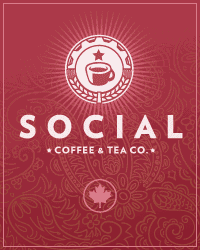This past spring, I felt a sudden surge of nostalgia for Warsaw, the capital city of Poland and the city in which I was born and grew up. Within a few weeks, I was walking down the streets of the Old Town in Warsaw and planning a trip down to Krakow and Zakopane
In the past few years I have visited more than my usual share of cafés, thanks to a special significant other. Yet all this time I had this feeling of not quite finding that “perfect fit” café, where I could meet friends for coffee or devour the latest bestsellers. I remembered, as a young teenager, going to smoky downtown cafés decorated with thick velour curtains, where they served espresso and creamy desserts. So I decided that, during my visit to Warsaw, I would explore the café scene in the hope that I could relive my younger days again.
Obviously, being involved with specialty coffee for the past two years, my outlook on coffee in general has definitely changed. Up until a few years ago, I didn’t notice or care if the barista pulled my espresso shot from freshly ground coffee; nor did I think to ask if the coffee was freshly roasted. But now I did care!
It seems that everyone in Poland is drinking coffee these days; this is not a surprise, since it has always been served at social gatherings. But what does seem quite odd to me now is the way coffee used to be made when I was growing up. During the ’70s and ’80s, Poland was still held in Russia’s strong communist grip, and we did not have much in the way of appliances, namely coffee makers. All you needed was a kettle and grinder. Ground coffee went straight into a glass that was filled with hot water. Once the coffee grounds sank to the bottom of the glass, your coffee was ready to drink.
In the late ’80s, the automatic coffee makers started appearing in the stores, and it was then that we first started drinking coffee that is more similar to North American style coffee. Of course, coffee bars were extremely popular in those days, as they all had commercial espresso machines. Even today, I do not think too many people in Poland have an espresso machine at home.
Coffee Culture in Warsaw
When I arrived in Warsaw, I fell instantly in love with the new and modernized look. It has shrugged off the old look of the Eastern bloc – except, perhaps, the Palac Kultury (Palace of Culture), the tallest skyscraper in central Europe and the symbol of Warsaw. It was given to Warsaw as a Russian “proof of friendship”.
The city has changed a lot in the past ten years or so. Warsaw has restored and retained its architectural character even though 80% of it was destroyed in WWII. Now, they have raised the bar with the cosmopolitan restaurants, bars, and cafés, not to mention the amazing shopping! Warsaw now hosts many international events, the most recent being the Miss Universe competition in the very same Palac Kultury I spoke of earlier.
The café scene in Warsaw is the main place for young people to meet and socialize. As most apartments are quite small, people arrange to meet for coffee out on the town. Since smoking is still allowed in restaurants in Poland, many of the cafés were actually too smoky for me to go in, since I am not much of a smoker myself. So that narrowed down the list of the cafés that I could visit.
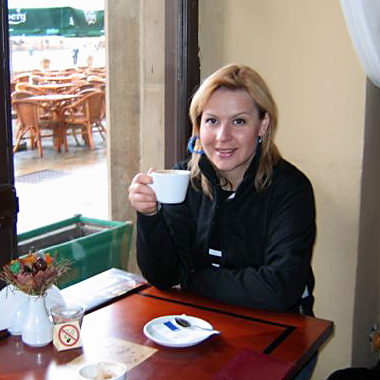
In the residential area, it was a bit of a challenge finding a café; the area of town where my mum lives hardly had any cafés at all! I am accustomed to living in the funky area of Vancouver with tons of cafés to choose from, so that was a bit of a shock. But once I got downtown, the cafés were all over the place, and all of them were extremely busy.
The changes in the coffee scene were evident as a few of the cafés proudly bore the Specialty Coffee Association of Europe (SCAE) plaque inside. I visited a couple of locations owned by Warsaw’s Barista Café, the home of the Polish National Barista champion. They are very similar to Starbucks. I was told that the barista champion had been sent for special training to advance his skills. I gathered that not all of the baristas undergo similar training, judging from the cappuccino I ordered .
Café Blikle is one of the oldest cafés in Warsaw and a personal favourite. It dates back to 1869 and has been run by the Blikle family from its opening day. From 1869 until the Warsaw Uprising in 1944, it was the cultural centre of Warsaw, where a mixture of the city’s best actors and writers met. Following the end of the war, they were forced to close until the collapse of the Communist party in 1989, when they were able to open their doors once more. Today, it is a wonderful traditional Viennese style café with wood panelling, green walls, and a big copper coffee pot. It practically oozes elegance and charm. People come there not only for coffee but also for a variety of sandwiches, desserts, and special drinks.
Many cafés in Poland are licensed to serve alcohol.. In most cases, it was pretty much a given that the licensed cafés would have the worst coffee. Those types of cafés seemed to be attracting more middle-aged customers, whereas the better cafés were filled with young people.
I was very lucky to have a chance to meet Asia Grzybowska, who used to own a café in Lodz, just south of Warsaw. She spent a lot of time in Iceland and got involved with specialty coffee there. She has sparked some interest in the coffee world and was featured on the cover of Barista magazine recently. Pretty amazing for a Polish café to be featured in a mainstream North American barista magazine!
Asia trains baristas and is also a competition judge as well, I believe. She took me to her favourite café, Coffee Heaven, were we had delicious cappuccinos and even more delicious in-house made desserts. She is a young woman who is not only very passionate about coffee, but also very sweet and easy to talk to.
A Dream Café in Krakow
My coffee epiphany peaked while in Krakow. This city was the home of Polish kings for many centuries and just bursts with culture and art. According to Hindu tradition, one of the few chakra stones – which correspond to the seven centres of energy in the human body – is buried somewhere around the Royal Castle in Krakow, which emanates powerful positive energy. (The other stones are said to be in Delhi, Mecca, Jerusalem, Rome, and Velehrad.) The crypt is closed to the public, but the radiation can apparently be felt when standing on a certain spot in the courtyard and is supposed to send its energy throughout the town. I am quite sure that this must have been a factor in finding great coffee in the city!
There were several cafés in Krakow that not only served great espresso but also had what I consider a beautiful and artsy décor. My favourite café there, Café Szara, is one place that I will certainly have to go back to on my next visit to Krakow. Graceful baristas, the best cappuccino in the country, and a décor a la ’30s is definitely what I would call my dream café. During the few days in Krakow, resting my legs and sipping cappuccinos at Café Szara after several long hours of walking was one of the highlights of the day.
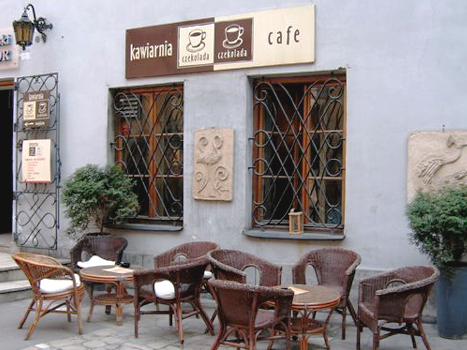
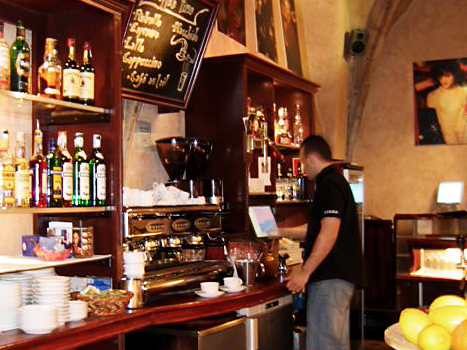

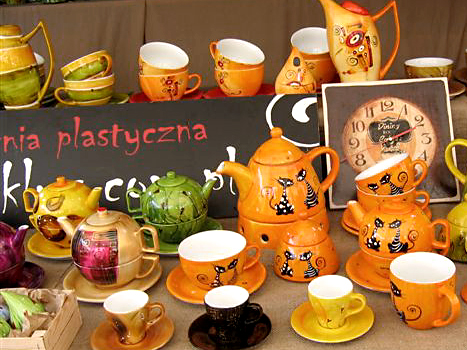
This was an amazing trip during which I found great coffee, wonderful cafés, reconnected with old friends and got to spend time with my mum. I was also happy that I got my mum interested in finding good cafés. She plans now to take her friends out to the places we found, where she knows she can find good coffee. But the best part of it was coming back home and seeing a latte art heart poured in the perfect espresso, made by the special man in my life!



